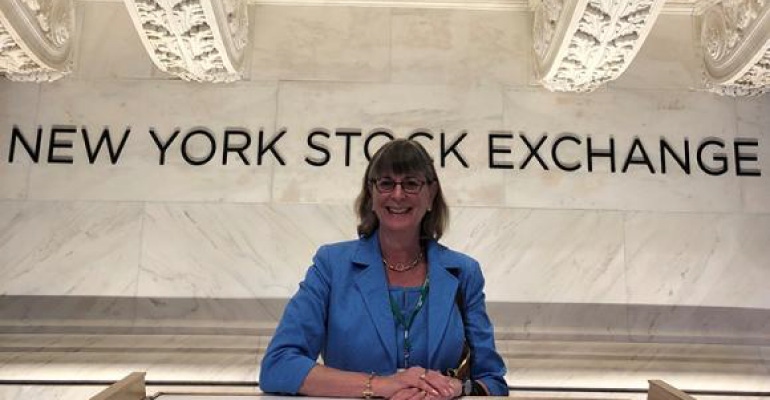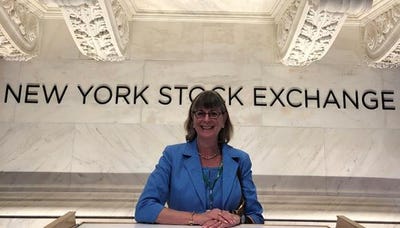After proving to be substantially positive tailwinds in 2021, recycled commodity pricing and renewable energy (RINs) pricing were forecast to be largely neutral in 2022 and were almost an afterthought on conference calls, in light of new developments. Projected pricing for recycled commodity baskets and RINs were forecast to be flat or just modestly up.

In this edition of the Business Report, we briefly touch on the fourth quarter results of 2021 reported by all the publicly-traded solid waste companies in February and encapsulate the 2022 guidance, as well as discuss significant new moves made by several of the companies and detailed on the follow-up conference calls.
The Fourth Quarter of 2021 Was Mixed
WM (WM) and Republic Services (RSG) reported EBITDA results that were largely in line to a touch light. GFL Environmental (GFL), Waste Connections (WCN) and Casella Waste (CWST) reported EBITDA results modestly above expectations. All the companies reported strong internal growth above expectations, particularly price, which rose sequentially for all the players. However, margins were lower than expected, largely across the board. Cost inflation was certainly a factor, but individual company components, most commonly dilution from recent acquisitions and higher incentive compensation, were typically additional factors.
2022 Outlook—Price Expected to Accelerate; Volume Largely Unsurprising
In light of persistent inflationary pressures, almost all the companies projected pricing to be up anywhere between 50 and 150 basis points over 2021 levels, with WCN’s forecast of 6.5+% price at the high end and RSG’s yield projection of 3.4% at the low end, flat with 2021 levels, and frankly likely conservative.
Volume guidance generally ranged between 1%-2%, as anticipated, but notably still above longer-term volume growth expectations for the industry of about 1%. WM is forecasting 2%, which was the high end, while WCN came in below, at about flat to 50 basis points up, but management noted an eighty basis point impact from the loss of several large legacy Progressive Waste municipal contracts, which were low return. In general, company managements noted an improving and supportive economy, some reopening juice left, and typically strong special waste pipelines.
2022 Outlook--Commodity-based Businesses Look Neutral
After proving to be substantially positive tailwinds in 2021, recycled commodity pricing and renewable energy (RINs) pricing were forecast to be largely neutral in 2022 and were almost an afterthought on conference calls, in light of new developments to be discussed later. Projected pricing for recycled commodity baskets and RINs were forecast to be flat or just modestly up. Energy waste expectations were similarly subdued, which was considered conservative given current oil prices.
2022 Projections In Line, with Margin Increases Muted, Though Price Expected to Cover Inflation
Despite very strong internal growth forecasts which were above expectations, in general, EBITDA and free cash flow (FCF) projections for 2022 were characterized as in line, or in WCN’s case, “solid” was the most common adjective. Typically, company margin expectations were modestly or just slightly disappointing, but again, parsing out the individual company puts and takes, expectations for underlying solid waste operating margins were generally characterized as up 20 to 40 basis points, though GFL is expecting an overall EBITDA margin pickup of 50+ basis points.
A key investment community concern is whether the industry can price for cost inflation, and based on commentary by company managements, so far, the answer appears to be yes with just a few caveats. WCN noted its price forecast of 6.5% would exceed underlying cost inflation that it pegged at 6%, with the potential to push price towards 7%, if inflation continued to rise. GFL also noted that the low end of its expected price increase of 4.5%-5.0% covered underlying cost inflation of around 4%, underpinning its expectation of a more substantial 50+ basis point margin increase. RSG similarly saw pricing in excess of its net cost inflation. WM‘s and CWST’s commentary was slightly more nuanced—noting that price growth would cover underlying cost inflation, but operating efficiency improvements and other technology enhancements would provide the upside or increase in margins. CWST did note that 70% of its business is not tied to longer-term contracts and thus potentially flexible to be priced higher if need be.
2022 Capex is Elevated on Green Investments
Very consistently for WCN, GFL, and RSG, incremental capital expenditures (capex) above prior normalized levels will be spent on material recovery facilities (MRF) and renewable natural gas (RNG) facilities in 2022, with typically 1-2 MRF projects and 2-4 RNG facilities slated for 2022. WCN noted expected incremental investment of $100 million, and GFL also anticipates additional growth capital. All of these players will continue to generally work with 3rd parties or form joint ventures for their RNG plants.
But What to Do With the Cash? Industry Players Start to Diverge
In an industry generally characterized as fairly homogenous with similar playbooks, several major new moves were announced for the use of the prodigious cash flow that this industry reliably throws off, and industry participants are now going in some decidedly different directions. Perhaps most surprising to the investment community, WM announced that it was going all in on green investments—it intends to spend an incremental $550 million on recycling automation and eventually new MRF investments and RNG plants in 2022 alone, with another $1+ billion to be spent from 2023 to 2025. The company highlighted short payback periods and very high returns (even at very conservative RINs and natural gas price assumptions) that management noted were superior to the returns on solid waste acquisitions. In 2026, the company expects $580 million in incremental annual run-rate EBITDA, which will flow through to FCF as growth. WM also noted it is uniquely situated in the industry to take full ownership and all the potential upside in its RNG projects, given that it has the largest CNG fleet in North America and the amount of landfill gas owned within its landfill network.
Although RSG has been gradually building its environmental services business in recent years, it made a major move right before it reported, announcing that it intended to acquire US Ecology (ECOL), one of the leading, vertically integrated hazardous waste companies. RSG sees opportunity to consolidate the hazardous waste industry, similar to the path of the solid waste industry, but also noted that this move was customer driven as well—its customers are looking for, and asking for, a one-stop shop to handle all their environmental needs. RSG is expected to pay $1.5 billion and assume $700 million in net debt for a total enterprise value of $2.2 billion, equating to about ~12x projected EBITDA for ECOL.
The moves by WM and RSG prompted some questions and concerns that the solid waste consolidation opportunity was dwindling, though RSG noted that solid waste acquisitions will continue to be part of its capital allocation strategy. However, the three smaller waste players were quick to disabuse that notion. GFL announced that it intends to divest its infrastructure business, although it will retain an equity interest in order to participate in what it sees as potentially significant upside to this business over time. Part of the rationale for this move (besides simplifying the business) is to focus its cash flow on growing its solid waste business. Similarly, WCN and CWST are sticking to their traditional knitting, targeting further solid waste acquisitions.
M&A—Another Robust Year Expected
Regardless of individual company decisions, overall merger and acquisition (M&A) activity in the industry is expected to have another outsized and robust year. Technology demands, labor shortages and pandemic fatigue were all cited as reasons that sellers appear to still be flocking to the table. WCN believes it could spend another $1 billion in acquisitions this year and sees the addressable available market still at around $3.5-$4 billion. CWST has set out a new three-year plan, and in it has upped its acquisition target to $30+ million in acquired revenue per year, versus a prior range of $20-$40 million. GFL noted the possibility of a chunkier deal in the near term, and management sees the likelihood of another 25-30 tuck-in deals this year, with potentially $250-$300 million in revenues. RSG also talked about deploying another $500 million this year, exclusive of the ECOL deal. All of the acquisition pipelines were characterized as robust.
About the Author(s)
You May Also Like




